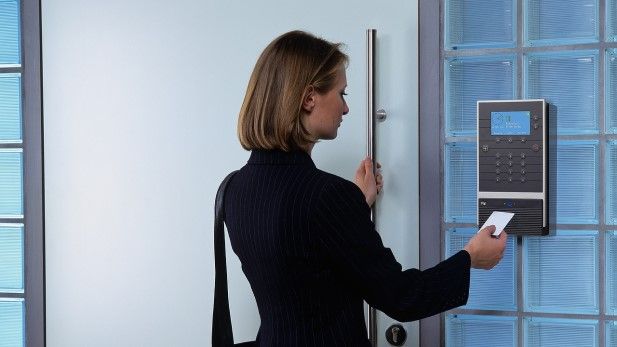Is your workplace ready to register employee working hours?

In July, companies will be legally required to register employee working hours. It is up to the individual employer to decide how to register hours in practice.
Still, employees and their unions should seek to impact the decision because the choice of method matters, even though the Folketing has reduced their demands for registering working hours.
These are the words of Stig Strandbæk Nyman, Postdoc at CBS and researcher of algorithms and digital tools. According to Nyman, the conventional way has always been to ask the employee to register their own hours.
What is most important to understand is that there is no such thing as a ‘neutral registration’ in practice
Stig Strandbæk Nyman, post.doc
“But the growing digitalisation presents new possibilities. An example of this is the utilisation of GPS data to track employees' presence and duration at their workplace. Or system data showing when an employee is working with work-related programs. What is most important to understand is that there is no such thing as a ‘neutral registration’ in practice. There will always be many choices tied to how and what we measure,” he points out.
WHEN THE CLOCK CAME TO DENMARK
We will get back to that. First, we will go back in time to look at the significance of the clock, which is a precondition for understanding our relationship with time.
In his book 'Gudhjem', Danish historian Poul Duedal notes that the first clock in Denmark was mounted on the Ribe Cathedral in 1401.
Following this, clocks became a common feature in other cities as well, marking a significant shift in how people perceived and interacted with time. Most clocks still had to be set every day by a bellringer, as they were not exactly precise. Grevinge parish on Zealand even managed to acquire a tower clock for the church and four years later a sun disc to set the clock by.
Many years later – in the 18th century – people started carrying pocket watches, and merchants and other tradespeople were able to pay by the hour instead of paying per task. And when the industrialisation came to Denmark around 1850, a more disciplined approach to timekeeping emerged. Factory sirens summoned workers every day, told them when to take a break and to go home. Then came the time clock.
INDVIDUALISM REPLACED THE SYNCHRONOUS JOB MARKET
The job market back then was characterised by synchronicity, which meant that employees were physically present in one place, had the same rhythm and arrived and left at the same time. This changed with the phase-out of the mass production, and since then, many industries have seen a more individual approach to the job market.
”Nowadays, many employees prefer to have flexibility in planning their day, operating within less rigid timeframes. For them, it is vital that the workplace acknowledges individual differences and accommodates diverse needs,“ says Stig Strandbæk Nyman.
Some people like to go for a run in the middle of the day to build energy, while others prefer to pick up their kids early and work after putting them to bed. And then there are people who thrive with a clear boundary between work and leisure.
However, this flexibility also means that it is more difficult to add up your actual working time, and the new EU requirements in fact reflect an intention to prevent people from working too much.
EMPLOYERS ALREADY TRACK HOURS
Even though it is new that the employer is obliged to register employee working hours, it is already prevalent at many workplaces.
Data collection is already taking place in many workplaces
Stig Strandbæk Nyman, post.doc
Stig Strandbæk Nyman emphasises that many employers wish to be able to track their employees’ working hours and refers to a survey last year by Danish think tank Mandag Morgen, where 79% of the responding leaders indicated that they use employee data collected via digital tools in practising their leadership.
”Data collection is already taking place in many workplaces as most of us leave digital footprints, however, we also know from experience that the measurements are far from as simple as they appear to be.”
For instance, many employers, especially in the USA but also here in Denmark, have introduced technology to track employee activity on their computer. But then so-called mouse jigglers were invented to regularly shake the mouse and thus cheat the control system,” says Stig Strandbæk Nyman.
TRACKING WILL HELP LABATORY TECHNICIANS
Nyman does not think that tracking is necessarily a negative thing, quite the contrary, in fact.
As part of his research, he is currently looking into the possibilities of developing a project to analyse the digital footprints of the members of Dansk Laborant-Forening (Danish lab technicians) in partnership with the Union of Commercial and Clerical Employees in Denmark (HK) and FOA.
One approach involves using pulse surveys and GPS tracking data collected from employees' smartwatches, aiming to enhance work procedures and employee well-being.
”Previously, we would circulate a questionnaire, but smartwatch data can give us another kind of insight, e.g. will our pulse rate increase in specific working situations and could it be a sign of stress? Suddenly we have a unique opportunity to unveil situations that do not work optimally,” says Stig Strandbæk Nyman and emphasises that the data collection can be put together in many ways and that it can be up to the individual employee to decide which data they wish to share with others.
MIND THE DILEMMAS
Even if the concrete task from the EU might sound simple at first glance, the CBS researcher points out that many dilemmas follow, especially because many of us do not keep work and leisure separate as we did when the factory sirens controlled operations.
”How do we, for instance, track immersion? And if I go for a run and suddenly think of a great solution to a task – does that count as work? And should the entire run count as work?” Stig Strandbæk Nyman asks.
He provides the following advice for the companies and organisations who are currently getting ready for meeting the EU requirements in July:
”When they decide what is the best method, they should remember that it is all in the eye of the beholder, which is why it will always be under debate. For the same reason, it is important to secure support of the tracking, for instance by involving employee representatives and unions in the process. And as with any form of measurement, it is essential that they are conducted under appropriate ethical conditions.”
Contact:
Post.doc, Stig Strandbæk Nyman: snc.digi@cbs.dk
Journalist, Kent Kristensen: kk.slk@cbs.dk
